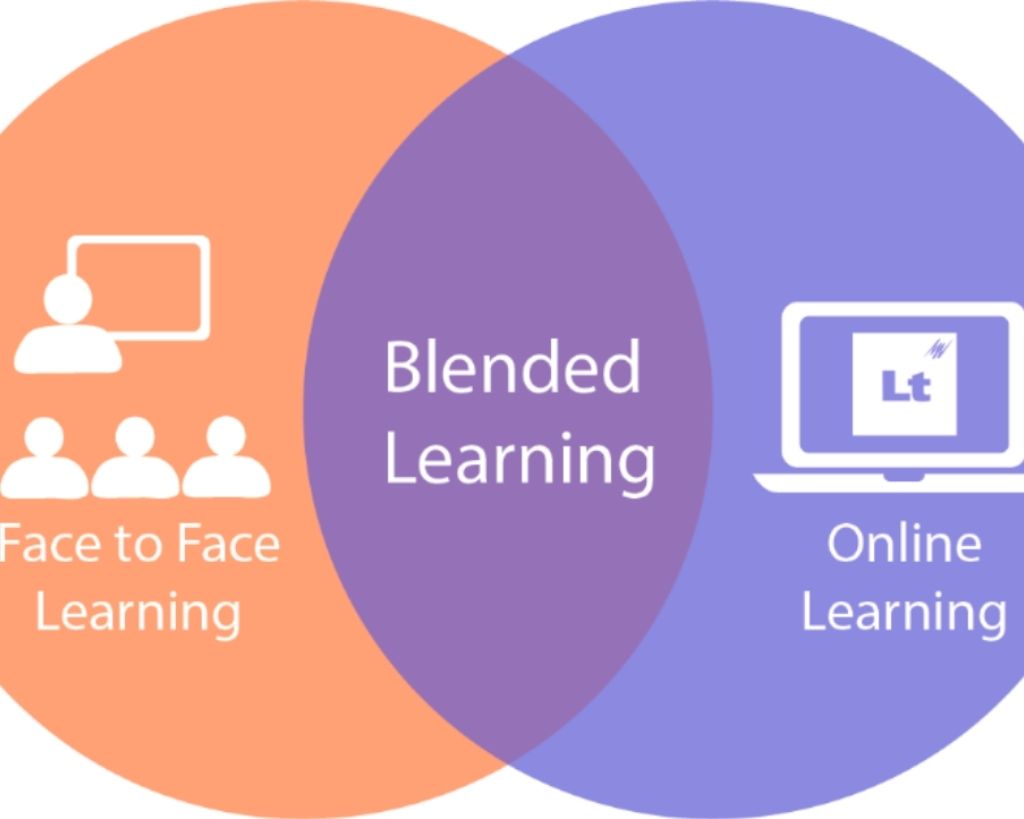
In the course of the corona pandemic, most of them are likely to have gotten to know their PC and laptop, tablet, and smartphone better than before. Digital work, which was unthinkable in most industries before the crisis and discredited as planned or paid idleness, has become commonplace. Most educational institutions and education providers could no longer ignore digital learning, and the pandemic took its toll. The pandemic situation is now easing, but what remains of eLearning? Does the end of the pandemic mean the end of digital learning formats? And do you always have to juxtapose face-to-face teaching and digital teaching? A mixture of both could represent a flexible solution: the blended learning approach is helpful to achieve this.
What Is Blended Learning?
Blended learning is often referred to as “hybrid or integrated learning.” It means “mixed learning” because it combines online and face-to-face teaching. There are alternating teaching units on-site, in which, for example, group work or practical exercises are incorporated. These are especially important for skills and abilities that must be imprinted on the motor, technical, and social levels. A lot can be learned theoretically, but handling a chainsaw or a patient should be practiced at least a few times in real life.
Digital learning, in turn, can support the theoretical part of imparting knowledge. In a well-structured and well-thought-out learning environment, everyone can learn at their own pace. Since the theory mostly has to be repeated a few times, the ability to access digital learning modules repeatedly is beneficial.
Of course, the two phases must not be designed entirely independently of one another. Instead, the eLearning and presence phases support each other. Such a combination must be didactically planned precisely and coordinated with one another. Only in this way can the didactic added value of blended learning be fully exploited.
Also Read: New Mobility And Blockchain: Urban Mobility Of The Future
What Are The Advantages Of Blended Learning In Everyday Life?
Blended learning is a varied method that can increase the motivation to learn different types of learners. For example, further training courses that follow this approach can be used in parallel to a full-time job but also overcome the perceived anonymity of pure online events. Other advantages of this concept are:
- A high degree of flexibility (independent of time and location)
- Learners can learn independently at their own pace (self-determination)
- The personal contact of the learners in the face-to-face phase
- Feedback processes can easily be implemented in eLearning
- All types of learner are addressed, as the variety of methods enables the learner to focus on the most suitable one
- The financial outlay for renting rooms, learning materials, and travel costs is reduced
Which Blended Learning Concepts Are There?
Blended learning concepts are usually differentiated from one another based on the change in phases, whereby three common ideas can be mentioned as a rule:
- eLearning before attendance
- Presence before eLearning
- eLearning and presence in sync
One possible process of a blended learning concept can be that preparatory work or follow-up work on face-to-face teaching with the help of eLearning is required. This has the advantage that the learners are entirely flexible in time and location. For example, the eLearning phase can contain a specific application task of theoretically learned or safeguarding knowledge.
Furthermore, the concepts differ not only in the change of phases but also in focus. For example, the face-to-face event or the online phase can focus on a model. But there are also concepts in which online and face-to-face degrees are equally important.
However, it must be borne in mind that blended learning demands a higher degree of self-discipline and time management than “classic” face-to-face teaching because both face-to-face and online lessons have to be taken seriously and integrated into the daily routine. By combining both approaches, blended learning concepts help structure learning without taking away too much flexibility from the learner and without overwhelming them with pure self-organization.
Conclusion
In principle, all forms of eLearning can be used in the blended learning concept. However, not all phases of face-to-face teaching can be meaningfully transferred to eLearning. Even if digital learning can be seen as enrichment, a complete waiver of face-to-face teaching should not be considered. For example, some practical work cannot be meaningfully implemented in eLearning learning environments in the craft sector. In such industries, blended learning concepts are more appropriate. In this way, theoretical knowledge can be acquired and consolidated through online lessons, while the face-to-face phases enable practical training.





